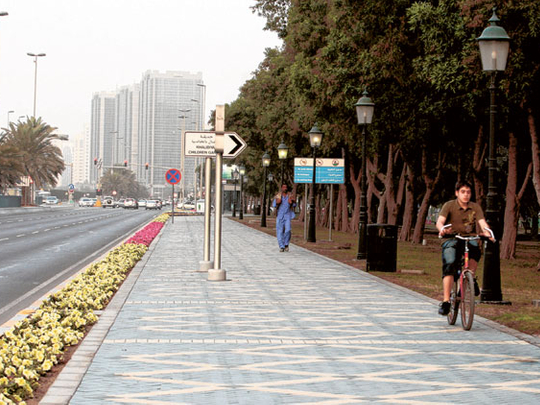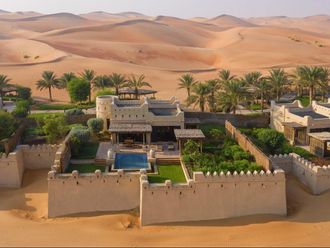
Abu Dhabi: Only 15 per cent of residents living in the capital's downtown area currently walk to their work place, but this is set to be doubled within the next two decades as a new urban model becomes more widespread, urban planning officials said.
When implemented, this neighbourhood design will help make the entire emirate of Abu Dhabi greener and more environmentally sustainable, Ebrahim Al Hamoudi, manager of the transport planning department at the Urban Planning Council (UPC), told Gulf News.
"Currently, 40 to 60 per cent of all greenhouse gas emissions in the capital are produced by motorised vehicles. The new neighbourhood model therefore focuses on making neighbourhoods more walkable.
"Pedestrian-friendly neighbourhoods will then encourage residents to undertake more non-motorised journeys," Al Hamoudi said.
The neighbourhood design is outlined in the UPC's Urban Street Design Manual, which aims to create safer roads and more lively public areas in keeping with Abu Dhabi Vision 2030.
It will be implemented across the emirate by the UPC, the Department of Municipal Affairs and the Department of Transport.
Explaining the elements of the new urban model, Al Hamoudi said better shading and easier access for people with special needs were key components.
Striking features
Another of its striking features is a broader pavement, which reduces the width of the road by almost 12 per cent.
"The average width of a sidewalk in the capital used to range from 0.8 metres to 1.2 metres, but now the minimum required width has been increased to 2 metres.
"Not only does this make cycling and walking more comfortable, but it also calms driver behaviour," the official explained. Speed bumps will also be replaced by a design element known as raised crossing tables, which looks like a larger and flatter speed bump.
"These induce drivers to reduce their speed without stopping completely, which makes driving a smoother experience compared to a speed bump. People in wheelchairs will also find it easier to cross these crossing tables than speed bumps," Al Hamoudi said. The combined effect is smoother driving and enhanced pedestrian safety.
In addition, parking spaces will also be increased by redesigning parking lots to accommodate more cars within the same area.
Bill Lashbrook, senior planning manager at the UPC, added that pavements and areas in front of buildings would also be transformed into attractive public spaces with the use of proper landscaping and infrastructure.
Stopping for rest
"This means the planting of water-efficient plants to create green spaces, along with the placement of seats so that people can stop for a rest. It also makes walks more comfortable for the elderly," he explained.
According to Lashbrook, the focus is first on designing newer localities according to the UPC guidelines.
"When maintenance work is undertaken in older neighbourhoods, they too will be retrofitted to conform as much as possible to the new guidelines," he added.
When Gulf News visited a pilot neighbourhood adjacent to Corniche Road where the UPC guidelines have been implemented across over 23,000 square metres of space, driver speeds appeared much calmer.
The number of parking spaces had also been doubled from 220 to 407, UPC officials said.
Residents were also seen relaxing on the benches placed along the pavement or taking walks.
Suzaan Arikat, a 31-year-old Emirati human resource executive who was out for a stroll in the area, commended the new neighbourhood design when its elements were pointed out to her.
"It is very calm and safe in this particular area, so we frequently come for walks. There is also a lot of shade and cars tend not to speed," she said.







